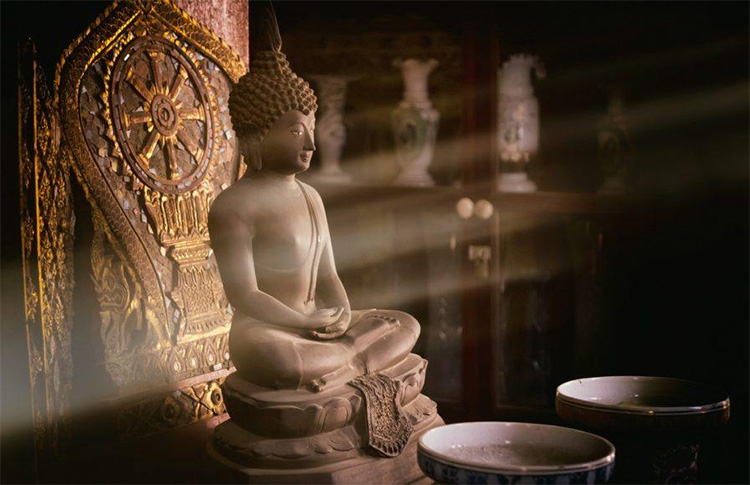Buddhist attitude to other religions
Source:Island
There were several religions and life philosophies during the Buddha’s time and naturally he had to take a stand regarding them. The religions fell into two main groups Brahmanism and Samanism, while the other philosophies could be grouped under materialism and skepticism. Most of the view these religions and philosophies propounded were included in the sixty-two view that were refuted by the Buddha in his famous Discourse Brahmajala sutta of the Digha Nikaya. Nevertheless, Buddha treated the authors of these views with utmost respect. Buddha did not say these views were false, instead he explained how these views arise due to psychological reason driven by desires and expectations, which have a direct impact on what we want to believe in.
The Buddha always referred to these religious teachers as Kammavadino – which meant persons who uphold the moral life and those who preach that society must have a moral foundation. He thus recognised the right for all religions to exist in different places at different times, and also at the same place at the same time. Even when disciples of other religious leaders wanted to join Buddha’s Sangha, he would advise them to continue to support their previous teachers with their material needs. He admonished his disciples to treat other religious teachers with kind words, kind deeds and kind thought.
The Buddha identified four types of religions apart from Buddhism with regard to their origin and basis. These were (1) religions based on divine revelation, (2) religion based on the claimed omniscience of its founder (3) religion based on logical and metaphysical speculation, and (4) religion based on skeptical or agnostic foundation. Buddha did not say any of these religions is ‘false’. He was of the opinion these religions preached Brahmacariyavasa which meant Practice of Higher Life. This term has been used to refer to Buddhism as well.
Did the Buddha say there is no salvation outside Buddhism? With regard to this question his answer was ‘I do not declare all other samanas and brahmanas are sunk in birth and decay’ (Suttanipata). This may be interpreted as an acceptance that salvation may be possible outside Buddhism.
The Buddha, his followers and kings who initiated the spread of his teachings such as Dharmasoka, appreciated the importance of religious harmony. One of Asoka’s Edicts says that he values more than gifts and honours to him, the growth of the essentials of all religions. The Edict discourages praising of one’s own religion and condemning of other religions. Further it encourages the learning of other religions. Buddha, it must be remembered, was well versed in all religions practiced during his time.
The Buddha discouraged strong grasping of one’s religion. The Buddha Dhamma, he said, should be treated as a raft that can be used to cross the ‘sansara’ river. Dhamma is meant for that purpose and not for grasping, Dhamma has only relative value, relative to the realization of the goal. Grasping of religious views and treating them as supreme would lead to exclusivism and fundamentalism. Conflict, violence and even wars are due to grasping of religious, political and other views. The violence Sri Lanka has been experiencing recently is due to such grasping of views.
Buddhism has no issue with pluralism, religious, political, social or cultural. Within it, there is doctrinal, scriptural, cultural and social pluralism, and good tolerance of the different views and ideas that abound in relation to it. With regard to social pluralism it may be said Buddhism does not interfere with people’s ways of living imposing restrictions unnecessarily. There is no restriction on marriage, divorce, birth control. Abortion, however; as it involves destruction of life, is looked down upon. The Buddha condemned the caste system that was in practice in India during his time, and recognised the equality of all human beings based on the fact that basically there are no biological differences among human beings
The Buddha in the Kalama sutta said not to accept his Dhamma without examining it, and only if one is convinced to accept it. He advised other inquiring monks who cpi;d read the mind of others to examine him thoroughly to find out whether he was enlightened (Vimamsaka –sutta). This openness and transparency of Buddhism, and the freedom it gives for inquiry and investigation, combined with its religious tolerance and pluralism should make Sri Lanka a country where religious bigotry and violence is rare. Yet the reality is otherwise. We seem to live in a world where violence caused by greed is rampant and overwhelming all other values. (Reference – Y.Karunadasa, 2015).
N. A. de S. Amaratunga








